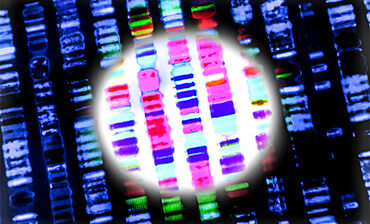Molecular and genomic typing

Molecular typing of pathogens that cause infectious diseases complements the traditional epidemiological surveillance by providing appropriate discriminatory analyses to foster the rapid and early detection of widespread international outbreaks, to detect and investigate transmission chains and the relatedness of strains, and to detect the emergence of antimicrobial resistance and new evolving pathogenic strains.
It also supports studies to trace-back the source of an outbreak and identify new risk factors, as strains can be linked more accurately to epidemiological and clinical data.
The analysis of molecular typing data can also aid the study of pathogen characteristics and the pathogen’s behaviour in a community of hosts, for example its spread over time and space, its disease transmission dynamics, its genetic factors (including mutations which influence the recurrence or virulence of infections), antigenic drifts/shifts of strains over time, and the development of drug resistance across multiple generations of strains.
This information offers help in understanding the disease mechanisms and can be applied towards improving and better targeting existing infectious disease prevention and control measures and thus presents a clear benefit for public health and public health policies.
Based on the input of Member State experts ECDC has developed a strategic framework for the integration of molecular and genomic typing into European surveillance and multi-country outbreak investigations.
Whole genome sequencing
Whole Genome Sequencing (WGS) has become the reference microbial typing method in outbreak studies and is increasingly applied to national surveillance of infectious diseases in EU/EEA countries and beyond.
Based on the input of the Member State experts, ECDC has developed a Expert opinion on whole genome sequencing for public health surveillance - Strategy to harness whole genome sequencing for strengthening EU cross-border outbreak investigation and public health surveillance.
The strategy envisages that within five years ECDC will have contributed to the establishment of standards and systems enabling the EU-wide use of WGS as the method of choice for typing of microbial pathogens, replacing other methods. This will improve the accuracy and effectiveness of disease surveillance, outbreak investigation and evaluation of prevention policies by enhanced assessment of disease and drug resistance transmission dynamics.
To support Member States in the transition to WGS from earlier technologies, and to ensure that WGS is adopted without compromising continuity of national and EU-level surveillance, ECDC proposes to:
- Map other WGS-based public health initiatives and engage partnerships;
- Lead on the integrated analysis of microbiological data and epidemiological data;
- Provide guidance on and validation of WGS-based methods for surveillance and;
- Develop, run and evaluate selected pilot



